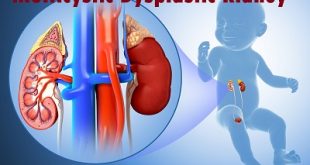Motor Neurone Disease – Definition
Motor neurone disease (MND) is a neurodegenerative disease that causes rapidly progressive muscle weakness and eventually results in paralysis. Specifically, this disease affects nerve cells (motor neurons) that control the muscles that enable to move, speak, breathe and swallow. MND is also known as Amyotrophic Lateral Sclerosis (ALS) or Lou Gehrig’s disease.
Difference between healthy and affected motor neuron
History
Augustus Waller an English scientist described the appearance of shriveled nerve fibers in 1850. In 1869, the connection between the symptoms and the underlying neurological problems were first described by Jean-Martin Charcot, who initially introduced the term amyotrophic lateral sclerosis. Amyotrophic comes from the Greek word amyotrophia. a means “no”, myo refers to “muscle”, and trophia means “nourishment”; amyotrophia therefore means “no muscle nourishment,” which describes the characteristic atrophy of the sufferer’s disused muscle tissue.
Epidemiology in world wide
MND is relatively uncommon with an annual incidence of about 2 cases per 100,000 population. Prevalence is about 5-7 per 100,000. General practitioners can expect to see one or two cases in their career. It can occur at any age but is more common in people aged over 50. The male to female ratio is 2:1. About 5-10% of cases are inherited. The mean age of onset is 43-52 years in familial and 58-63 years in sporadic cases of ALS. Male sex, increasing age and hereditary disposition are the main risk factors.
Types of motor neurone disease
MND can be sub-divided into different clinical forms although there is considerable overlap between the different types. The organs connected with Upper motor neuron (UMN) and Lower motor neuron (LMN) is represented in the below figure.
“Classical” spinal onset MND
- The upper and lower motor neurons of the arms and legs are damaged leading to weakness and stiffness
- The life expectancy is usually 3 and 5 years
- More common in men
Upper and lower motor neuron organs
Progressive bulbar palsy (PBP)
- The upper and lower motor neurons supplying muscles of speech and swallowing are affected first, leading to difficulties with chewing, swallowing and speech
- Symptoms are like slurred speech and difficulty with fluids
- The life expectancy is lower than spinal onset disease
Progressive Muscular Atrophy (PMA)
- Only lower motor neurons are affected. This leads to weakness and wasting of muscles, without stiffness
- This form is rare and is more common in men
- The life expectancy is longer than for “classical” MND
Primary Lateral Sclerosis
- The form affects only upper motor neurons. Onset is with stiffness in the legs, with progression to involve the arms, and speech and swallowing
- Diagnosis is difficult, and requires observation for at least 3 years
- The life expectancy is 10-15 years
Sporadic and Familial MND
- Sporadic MND: Sporadic MND is the term used for cases of the disease where there is no family history. If anyone is not aware of family members who has MND then chances are it is sporadic
- Familial MND: It is the term used when more than one member of a family has been diagnosed with the disease. This may be within the same generation or passed from one generation to some members of the next
Risk factors
- Environmental factors such as toxins associated with water and air
- Enormous stress on mind
- Unhygienic health conditions
Causes of motor neurone disease
- Gene mutations
- Excitotoxicity: Excess glutamate in the key areas of brain and spinal cord
- Excess Oxidation
- Deficient neuronal blood supply
Symptoms of motor neurone disease
- Loss of grip in hand and arm
- Feet and leg trips easily while walking
- Change in voice and slurred speech due to loss of neuronal signal to bulbar muscle
- Muscle cramp and twitching of weakened muscle
- Jerking of arms and legs when it is at rest
Diagnosis and Test
- Magnetic resonance imaging (MRI) scan
- Electromyography (EMG) – a test where needles are used to measure the electrical activity in muscles
- Blood investigation and lumbar puncture
- A muscle biopsy is occasionally performed
- Nerve conduction test – which is similar to an EMF, except the speed that nerves are able to conduct an electrical signal is measured.
Treatment and Medication
- Riluzole- It is an anti-glutamate agent, which inhibits the amount of glutamate released into the brain
- Medications such as Phenytoin and carbamazepine are used to treat muscle cramp
- Complementary therapies such as acupuncture, reflexology, massage and aromatherapy
Prevention of motor neurone disease
- Environmental factors are suspected to cause non-inherited motor neuron disease, however this is still an often debated topic, as researches still can’t provide strong evidences
- The best chance to prevent this condition is by removing as much as toxins in living environment as possible, improving hygiene and adopting a healthy lifestyle
 Diseases Treatments Dictionary This is complete solution to read all diseases treatments Which covers Prevention, Causes, Symptoms, Medical Terms, Drugs, Prescription, Natural Remedies with cures and Treatments. Most of the common diseases were listed in names, split with categories.
Diseases Treatments Dictionary This is complete solution to read all diseases treatments Which covers Prevention, Causes, Symptoms, Medical Terms, Drugs, Prescription, Natural Remedies with cures and Treatments. Most of the common diseases were listed in names, split with categories.








treatment for myolopathy due to HIV affects lower motor neurons. both legs are chilling and weak
Please get help from a doctor.
My husband is suffering from MND since from 5yrs and totally paralysis crossed 3yrs…
so please suggest me that is there is any guarantee chance of medicine for this disease.
Is there is any solutions and cure?
Please kindly let me know please …..
There is no cure.
My maternal grandmother was diagnosed with ALS and subsequently died from the disease. Is this disease hereditary and shoud i be concerned that i may develop the same disease
yes, sometimes hereditary may also cause the MND.
I have a brother presently with this sickness. It hurts so much seeing him suffer everyday. Is there no medical treatment? Can’t watch my brother die slowly.
Take him to the rehabilitation center to ease his pain and extend the lifetime.
My mother is having the same disease but she is in the initial stage.Do we have any possibility to have restrain its progress.
Kindly follow the treatment and rehabilitation procedures for easing the symptoms. Consult your doctor for rehabilitation procedures.